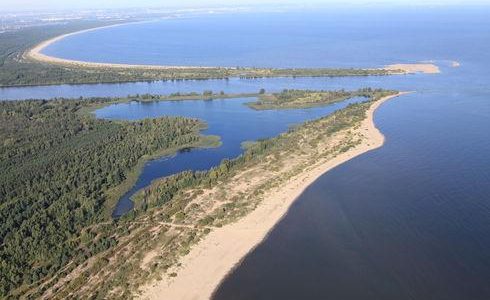“The Last Judgment” is a work that was never to be sent to Gdansk. The image was found here by accident as a result of a war. It was painted on a board, and Hans Memling used a mixed, tempera-oil technique to create it. Interestingly, it wasn’t until the 17th century that it was revealed that the author of the work was Hans Memling. Earlier, the authorship of the image was attributed to the van Eyck brothers. What is the history of the famous triptych?
“Only God can judge Me…”
“The Last Judgment” is a multidimensional work that unusually vividly depicts the ideas of what will happen to man on the day he stands before God. The original painting can be found today in the branch of the National Museum in Gdansk, where you can contemplate the work of Hans Memling in silence and concentration. On the central panel, the artist placed the figure of Jesus Christ, who sits seriously on a rainbow, and his feet are placed on a golden ball. He is accompanied by the apostles, Mary and John the Baptist. Four angels hover over the central figure, while Archangel Michael, dressed in armour, separates the damned from the blessed. Sinners go to the depths of hell, where devils greet them, and the blessed go to beautiful and desired paradise.
This, of course, is a description of the picture in brief, because there are plenty of characters and meanings hidden here. More than one scientific work has been written about the Last Judgment. Every day at the National Museum you can meet researchers, students and pupils who are staring at an outstanding medieval work.
From Bruges, not to Florence, but to Gdansk
Great works arise in pain. In the case of the “Last Judgment”, however, one can speak not only of the difficult process of creation, but also of the difficult path that the image had to follow in order to eventually hit it not where it was originally intended. The painting was created in the years 1467-71 in the Netherlands, and more specifically in Bruges (today’s Belgium). It was commissioned by the Italian banker from the painter Hans Memling, who – in his generosity – wanted to fund the work and put it in the ancestral chapel of San Michele in the church of San Bartolomeo in Badia Fiesolana near Florence.
The powerful triptych was painted for four years, until finally in 1473 it was to be transported by sea from the Netherlands to Italy. The work was placed on the San Matteo galley, blessed before the cruise and sent to southern Europe. Only that the work never reached its destination. In the English Channel, naval battles were fought between England and the Hanseatic League, to which Gdansk belonged. The famous privateer Paweł Beneke on board of a ship “Peter from Gdansk” did not spare anyone. When he found out what loot San Matteo was carrying, he decided to intercept them. After a fierce battle at the mouth of the Thames, the Gdansk privateer and his crew could enjoy exceptional achievements, including the triptych of Hans Memling. The spoils were divided and the painting was sent to Gdansk. It was displayed in St. Mary’s Basilica. The later fate of the painting was no less stormy. During the Napoleonic times, the triptych was taken to the Louvre Museum in Paris, and after the fall of Napoleon it went to Berlin and again back to Gdansk. The times of World War II were the “shifting” images again between the Third Reich and the Red Army. Finally, in 1958, the painting again came to Gdansk. Today, it is in the resources of the National Museum, sitting quietly on a bench, you can stare at its subsequent parts …



















